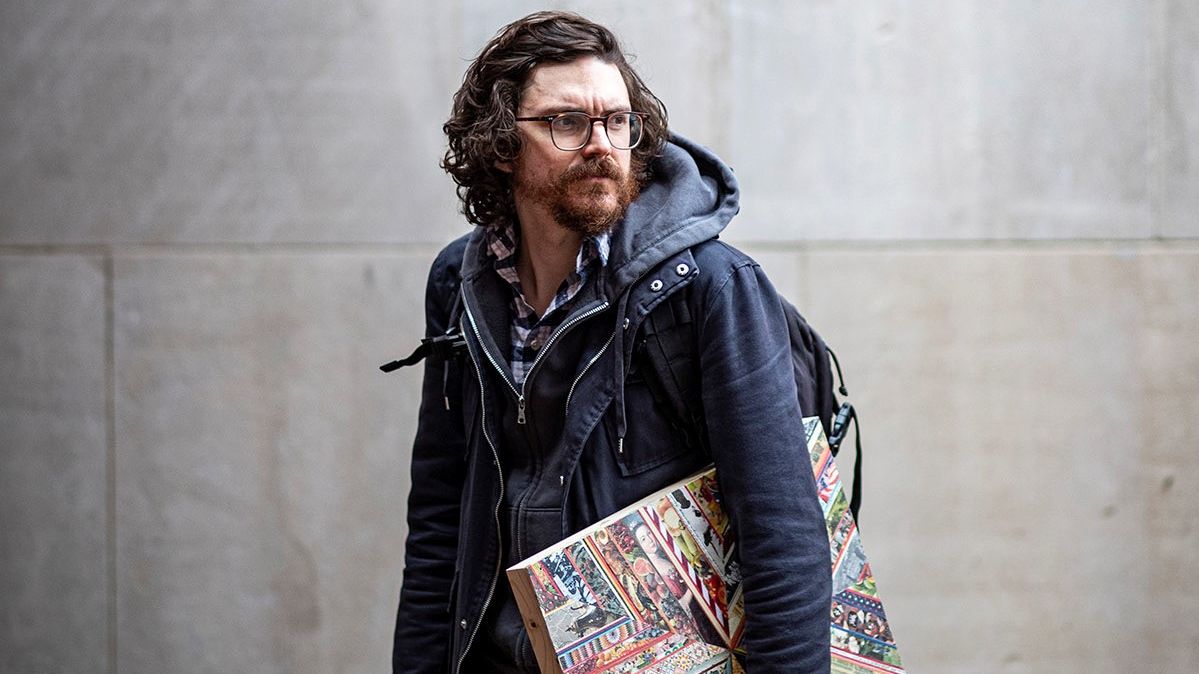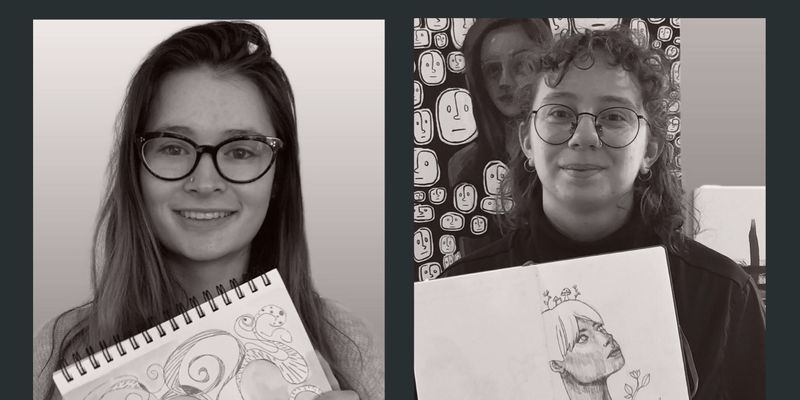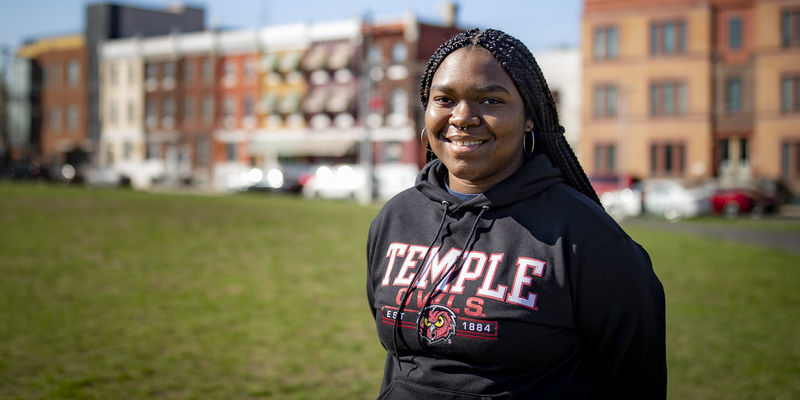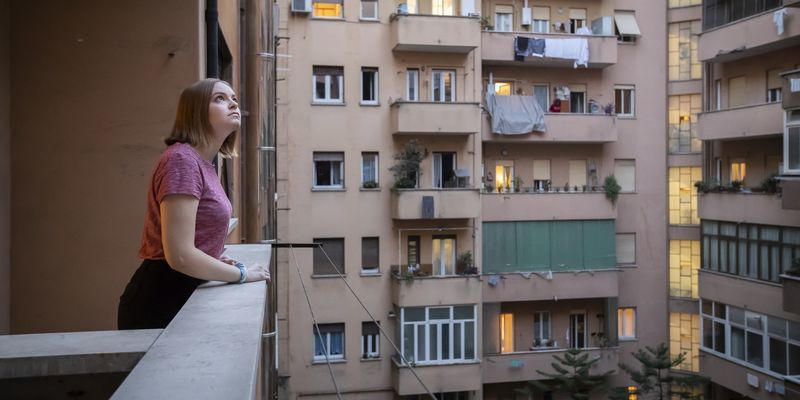Temple takes on U.N. art challenge, forges path toward equality
Temple University and Global Philadelphia team up to show their commitment to the U.N.’s Sustainable Development Goals through art.

“The progress of humanity doesn’t occur overnight; instead it is a series of gradual changes,” said Vice President of the Office of International Affairs Hai-Lung Dai. “Human prejudices are always present and that means we must confront them.”
This summer, Temple is making the most of a unique opportunity to confront prejudices head on through a collaborative, citywide art project.
The project began in spring 2019, when Zabeth Teelucksingh, executive director of Global Philadelphia (GPA), a nonprofit that helped Philadelphia become the first World Heritage City in the U.S., returned from a meeting of the Organizations of World Heritage Cities. Inspired by the U.N.’s Sustainable Development Goals, she committed to promoting them by partnering with nonprofits throughout Philadelphia to create artwork depicting all 17 goals. The SDGs serve as milestones for each participating country to achieve by 2030 and range from no poverty and zero hunger to gender equality, affordable and clean energy, and more.
Dai, who also serves on Global Philadelphia’s Board of Directors, knew this was something the Temple community would be interested in and chose to represent goal No. 10: reducing inequalities. Dai explained that Temple is well positioned to take on this goal because it falls so deeply in line with founder Russell Conwell’s purpose when he established Temple.
“Reducing inequalities is always our goal, and should always be the goal of higher education,” said Dai. “Education has the ability to transform and empower people through expansion of knowledge and ability.”
As the first step in carrying out the project, International Affairs’ Assistant Vice President Martyn Miller and Director of Communications and Marketing Lisa Meritz organized a committee including the Office of Institutional Diversity, Equity, Advocacy and Leadership (IDEAL); Temple University Libraries; Facilities Management; Strategic Marketing and Communications; and Global Philadelphia. With the help of the Tyler School of Art and Architecture, the committee set up parameters for the competition, decided where to locate the art and selected an artist.
Another aspect of the project is the sponsor selecting a nongovernmental organization (NGO)—or in Temple’s case, another area of the university—to receive a project grant. As the sponsor of Temple’s mural, the Office of International Affairs selected IDEAL to receive the $3,000 grant.
From among the eight Temple student and alumni applicants in the fall, Mat Tomezsko, TYL ’09, submitted the most unique entry. Rather than presenting a concept sketch, he proposed involving his research-based mural class in the creation of the piece. The class he leads is offered through the University Community Collaborative (UCC), which is part of the College of Liberal Arts. The program is designed to help high school students develop into confident, knowledgeable, and connected leaders within their communities in an effort to combat racial and other social injustice.
“The winner surprised us because we picked the piece where we didn’t yet know the end result,” said Meritz. “By involving a Temple-taught class and talented Philadelphia youth, the project became even more exciting and better than anything we could have possibly thought up.”
Tomezsko is calling his concept for the mural “Revolutionary Philadelphia” and the idea revolves around the people who made progressive contributions to help shape modern Philadelphia. Working with his 10 students in the UCC, he will help them research these important historical figures, discuss them and then create art about them. Tomezsko will then be acting as editor, joining these separate thoughts together into a collage.
By extending the reach of these students, who are often from under-resourced backgrounds, Tomezsko’s idea creates platforms and opportunities for them to have their voices heard.
“If people have a voice and feel represented, that’s a small step toward equality,” said Tomezsko. “Giving audiences access to another point of view opens the door to empathy, but these opportunities don’t happen often enough in art.”
Tomezsko, an accomplished muralist, has created a variety of community art projects over the past decade. These include Free Paint, an event where anybody could paint whatever they wanted on long canvases that Tomezsko went on to turn into a collage. Though he kept much of his past collaborative work abstract, “Revolutionary Philadelphia” is more grounded in telling the stories of our city’s historical figures.
“Understanding history is a method for knowing your own story,” said Tomeszko. “There are so many tools for understanding how to live and thrive in society that are hidden back in time, and require a little digging.”
Tomeszko’s class, which starts in July and runs for five-and-a-half weeks, will culminate with the collaborative collage that will be adapted into a final design for a mural. Then, Tomeszko will paint the final design and install the piece near the 11th Street entrance to Main Campus at Anderson and Gladfelter Halls. The mural is slated to be installed toward the end of August and will be in place for two years before moving on to a gallery show managed by Global Philadelphia.
“The world has a lot of big problems and the best way to solve them starts in our own backyard,” said Meritz. “Temple is all about teaching students who will become socially conscious, who are going to make a better world through what they’ve learned.”
-Rayna Lewis


